What Cut of Beef Has Highest Iron
Top 10 Foods Highest in Iron

Powered by USDA Nutrition Data
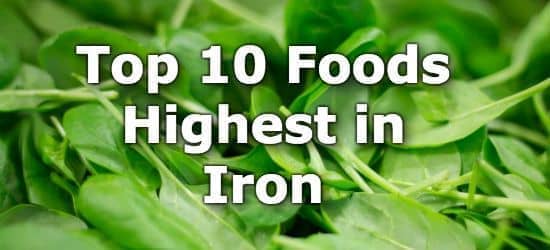
Iron is an essential mineral used to transport oxygen around the body in the form of hemoglobin. A slight deficiency in iron causes anemia (fatigue/weakness), and a chronic deficiency can lead to organ failure. (1)
Conversely, too much iron leads to the production of harmful free radicals, and interferes with metabolism, causing damage to organs like the heart and liver. (1)
The body is able to regulate the uptake of iron, so overdose is rare and usually only occurs when people take supplements. Iron from natural food sources, like the ones listed below, are considered safe and healthy.
Foods high in iron include fortified cereals, beef, shellfish, dried fruit, beans, lentils, dark leafy greens, dark chocolate, quinoa, mushrooms, and squash seeds. The current daily value (DV) for iron is 18 milligrams (mg). (2)
Below is a list of high iron foods. For more high iron foods see:
- Non-heme plant-based iron foods
- Meat based heme-iron sources
- High iron foods for vegans and vegetarians
- Fruits and vegetables high in iron
- Introduction
- List of High Iron Foods
- Printable
- Iron Rich Foods by Nutrient Density (Most Iron per 100 grams)
- Non-Heme (Plant Based) Iron Foods
- Heme (Meat Based) Iron Foods
- Heme Iron vs. Non-Heme Iron
- Iron Absorption Factors
- Causes of Iron Deficiency
- Warnings
- About the Daily Value (%DV) Target
- About the Data
- Nutrient Ranking Tool
- Related
- Feedback
- References
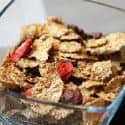
#1: Fortified Cereals
| Iron per 3/4 Cup | Iron per 100g | Iron per 200 Calories |
|---|---|---|
| 19.6mg (109% DV) | 67.7mg (376% DV) | 34.7mg (193% DV) |

#2: Beef (Skirt Steak)
| Iron per 6oz Steak | Iron per 100g | Iron per 200 Calories |
|---|---|---|
| 9.3mg (52% DV) | 5.5mg (30% DV) | 4.1mg (23% DV) |

#3: Shellfish (Oysters)
| Iron per 3oz Serving | Iron per 100g | Iron per 200 Calories |
|---|---|---|
| 7.8mg (43% DV) | 9.2mg (51% DV) | 11.3mg (63% DV) |
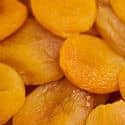
#4: Dried Fruit (Apricots)
| Iron per Cup | Iron per 100g | Iron per 200 Calories |
|---|---|---|
| 7.5mg (42% DV) | 6.3mg (35% DV) | 3.9mg (22% DV) |
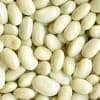
#5: Large White Beans
| Iron per Cup | Iron per 100g | Iron per 200 Calories |
|---|---|---|
| 6.6mg (37% DV) | 3.7mg (21% DV) | 5.3mg (30% DV) |

#6: Spinach
| Iron per Cup Cooked | Iron per 100g | Iron per 200 Calories |
|---|---|---|
| 6.4mg (36% DV) | 3.6mg (20% DV) | 31mg (172% DV) |

#7: Baking Chocolate (Unsweetened)
| Iron per 1oz Square | Iron per 100g | Iron per 200 Calories |
|---|---|---|
| 5mg (28% DV) | 17.4mg (97% DV) | 5.4mg (30% DV) |

#8: Quinoa
| Iron per Cup | Iron per 100g | Iron per 200 Calories |
|---|---|---|
| 2.8mg (15% DV) | 1.5mg (8% DV) | 2.5mg (14% DV) |

#9: White Button Mushrooms
| Iron per Cup Cooked | Iron per 100g | Iron per 200 Calories |
|---|---|---|
| 2.7mg (15% DV) | 1.7mg (10% DV) | 12.4mg (69% DV) |
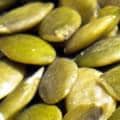
#10: Squash and Pumpkin Seeds
| Iron per 1oz Handful | Iron per 100g | Iron per 200 Calories |
|---|---|---|
| 2.5mg (14% DV) | 8.8mg (49% DV) | 3.2mg (18% DV) |
See All 200 Foods High in Iron
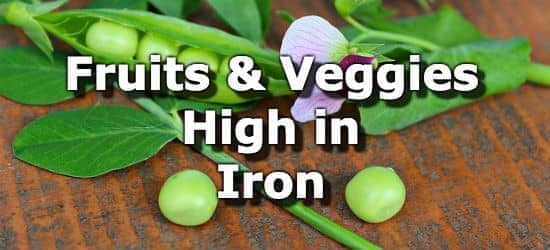 Next ➞
Next ➞
Printable One Page Sheet
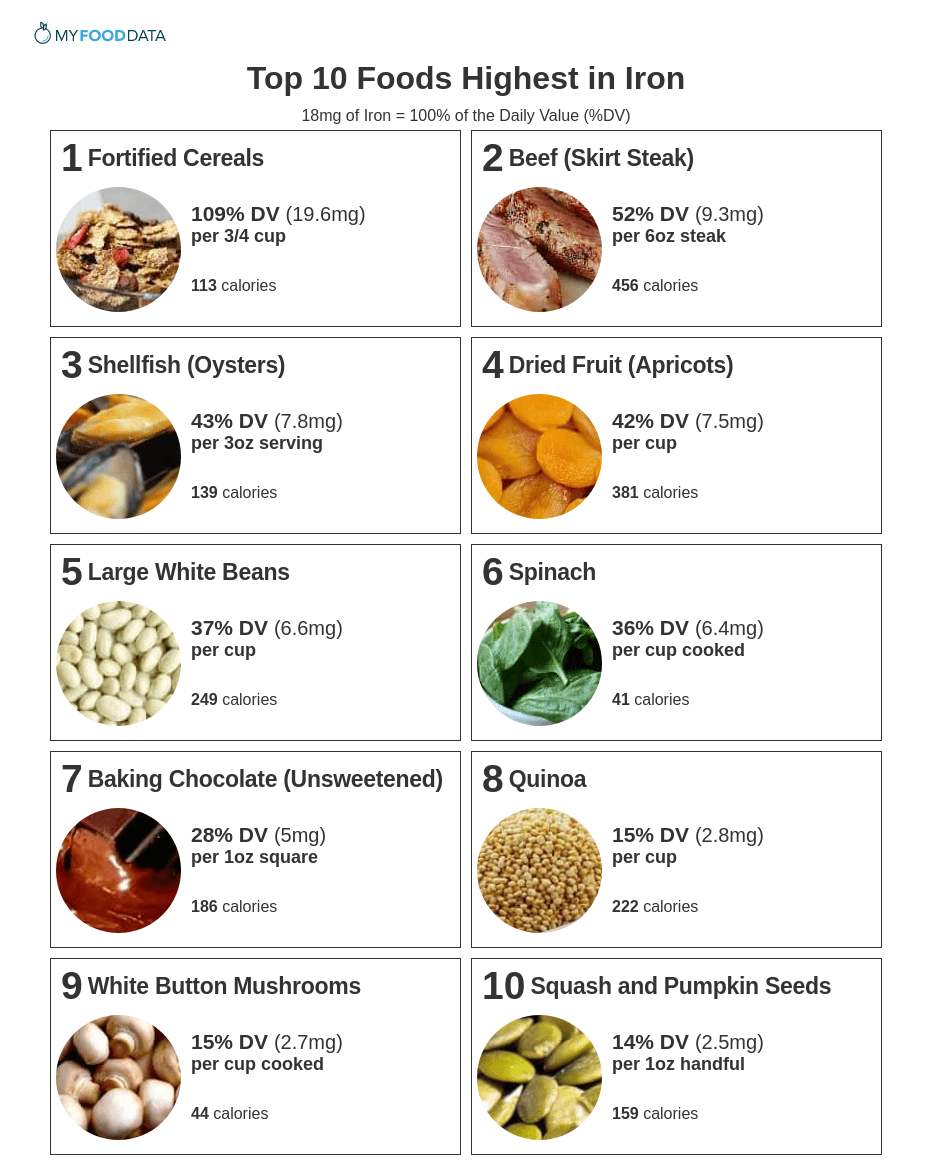
Iron Rich Foods by Nutrient Density (Most Iron per 100 grams)
Non-Heme (Plant Based) Iron Foods
Heme (Meat Based) Iron Foods
Heme Iron vs. Non-Heme Iron
- Non-heme iron comes from plant foods, heme iron comes from animal foods.
- Heme iron can be absorbed more efficiently by the body.
- The body can better regulate absorption of non-heme iron, helping to protect against toxic effects.
Factors which Affect Iron Absorption and Retention
- The most important factor is your existing iron level. A low iron level will increase absorption, while a high iron level will decrease absorption. In general, you absorb 10-15% of the iron from foods. (1)
- Meat proteins will increase the absorption of non-heme iron. (1)
- Vitamin C will increase the absorption of non-heme iron by as much as 85%. (1,4)
- Tannins, oxalates, polyphenols, and phytates found in tea and coffee can reduce the absorption of non-heme iron by up to 65%. Black tea reduces absorption more than green tea and coffee. (1,4,5)
- The following teas and beverages also inhibit iron absorption: Peppermint tea, cocoa, vervain, lime flower, chamomile, and most other herbal teas containing polyphenols. (5)
- Calcium, polyphenols, and phytates found in legumes, whole grains, and chocolate can reduce absorption of non-heme iron. (1) Further milk and antacids can inhibit absorption of iron supplements. (6)
- Some proteins from soy products may inhibit non-heme iron absorption. (1)
- High fiber foods, such as whole grains, raw vegetables, and bran can inhibit absorption of iron supplements. (6)
- Foods or drinks containing caffeine can inhibit absorption of iron supplements. (5,6)
Causes of Iron Deficiency
- Menstruating Women - Due to blood loss during menstruation, women are at risk of iron deficiency. The greater the blood loss the greater the risk. (1)
- Individuals with Kidney Failure - People with kidney failure, and especially those on dialysis, are at high risk of iron deficiency anemia. This is due to an inability of the kidney to create adequate amounts of the hormone erythropoietin which is necessary for red blood cell creation, and therefore, retaining iron. (1)
- Pregnant and lactating women - A developing fetus requires a high amount of iron, likewise, there is a high amount of iron lost through breast milk after birth. (1)
- Older infants and toddlers - Infants and toddlers require a lot of iron as they grow and so are at risk of iron deficiency. (1)
- People with low levels of Vitamin A - Vitamin A helps move iron from storage in the body. Without adequate amounts of vitamin A, the body cannot regulate iron leading to an iron deficiency. (1)
- People with gastrointestinal disorders - Diarrhea, ulcers, and other gastrointestinal disorders and diseases can lead to an inadequate iron absorption. (1)
- Cancer - 60% of patients with colon cancer are iron deficient. 29-46% of patients with other cancers are also deficient in iron. (1)
- People with Gastrointestinal Disorders - People on a restricted diet, or who have problems absorbing nutrients are at risk of iron deficiency. This includes people after bypass surgery. (1)
- People with Heart Failure - Around 60% of people with heart failure are iron deficient. (1)
Warnings
- People with high levels of iron in their body may have Hemochromatosis. They should avoid the high iron foods listed in this article. Hemochromatosis can lead to organ damage. Symptoms include joint pain, fatigue, general weakness, weight loss, and stomach pain.
- Liver is a high cholesterol food which should be eaten in moderate amounts and avoided by people at risk of heart disease or stroke.
- Dark Chocolate, pumpkin seeds, squash seeds, sesame seeds, dried apricots, and molasses are high calorie foods and should be eaten in moderate amounts by people with a high body mass index.
About the Data
Data for the curated food lists comes from the USDA Food Data Central Repository.
You can check our data against the USDA by clicking the (Source) link at the bottom of each food listing.
Note: When checking data please be sure the serving sizes are the same. In the rare case you find any difference, please contact us and we will fix it right away.
About Nutrient Targets
Setting targets can provide a guide to healthy eating.
Some of the most popular targets include:
- Daily Value (%DV) - The %DV is a general guideline for everyone and takes into account absorption factors. It is the most common target in the U.S. and found on the nutrition labels of most products. It is set by the U.S. FDA.
- Reference Dietary Intake (%RDI) - The Reference Dietary Intake (RDI) accounts for age and gender. It is set by the U.S. Institute of Medicine. The RDI for amino acids is set by the U.N. World Health Organization. The daily value (%DV) builds on the reference dietary intake to create a number for everyone.
- Adequate Intake (%AI) - Sets a target for Omega 3 and Omega 6 fats. The Adequate Intake is also set by the U.S. Institute of Medicine. It represents a number to ensure adequacy but lacks the same level of evidence as the Reference Dietary Intake. In short, the number is less accurate than the RDI.
See the Guide to Recommended Daily Intakes for more information.
Want to set your own targets? Sign up for an account and set custom targets in the daily meal planner.- Foods High in Iron
- Foods Low in Iron
- Vegetables High in Iron
- Fruits High in Iron
- Vegetarian Foods High in Iron
- Nuts High in Iron
- Grains High in Iron
- Beans High in Iron
- Dairy High in Iron
- Breakfast Cereals High in Iron
- Fast Foods High in Iron
View more food groups with the nutrient ranking tool, or see ratios with the nutrient ratio tool.
- Iron Foods for Vegetarians and Vegans
- Fruits and Vegetables High in Iron
- The Best 10 Foods For Healthy Hair And Nails
- Vitamin B12 Foods
- Vegetarian sources of Vitamin B12
- High Folate (B9) Foods
- High Vitamin C Foods
feedback
Data Sources and References
- Office of Dietary Supplements Fact Sheet: Iron
- FDA Daily Values Guidelines
- U.S. Agricultural Research Service Food Data Central
- Hallberg L, Rossander L. Effect of different drinks on the absorption of non-heme iron from composite meals. Human Nutrition Applied Nutrition 1982 Apr;36(2):116-23.
- Richard F. Hurrell, Manju Reddy, and James D. Cook. Inhibition of non-heme iron absorption in man by polyphenolic-containing beverages. British Journal of Nutrition (1999), 81, 289-295
- National Library of Medicine Fact Sheet on Taking Iron Supplements.
Source: https://www.myfooddata.com/articles/food-sources-of-iron.php
0 Response to "What Cut of Beef Has Highest Iron"
Post a Comment